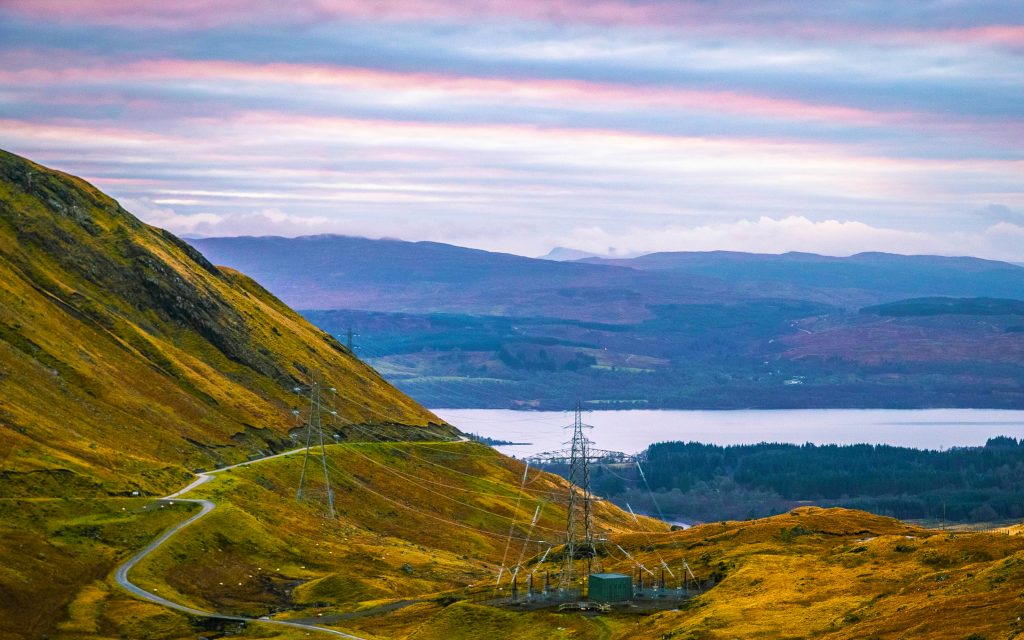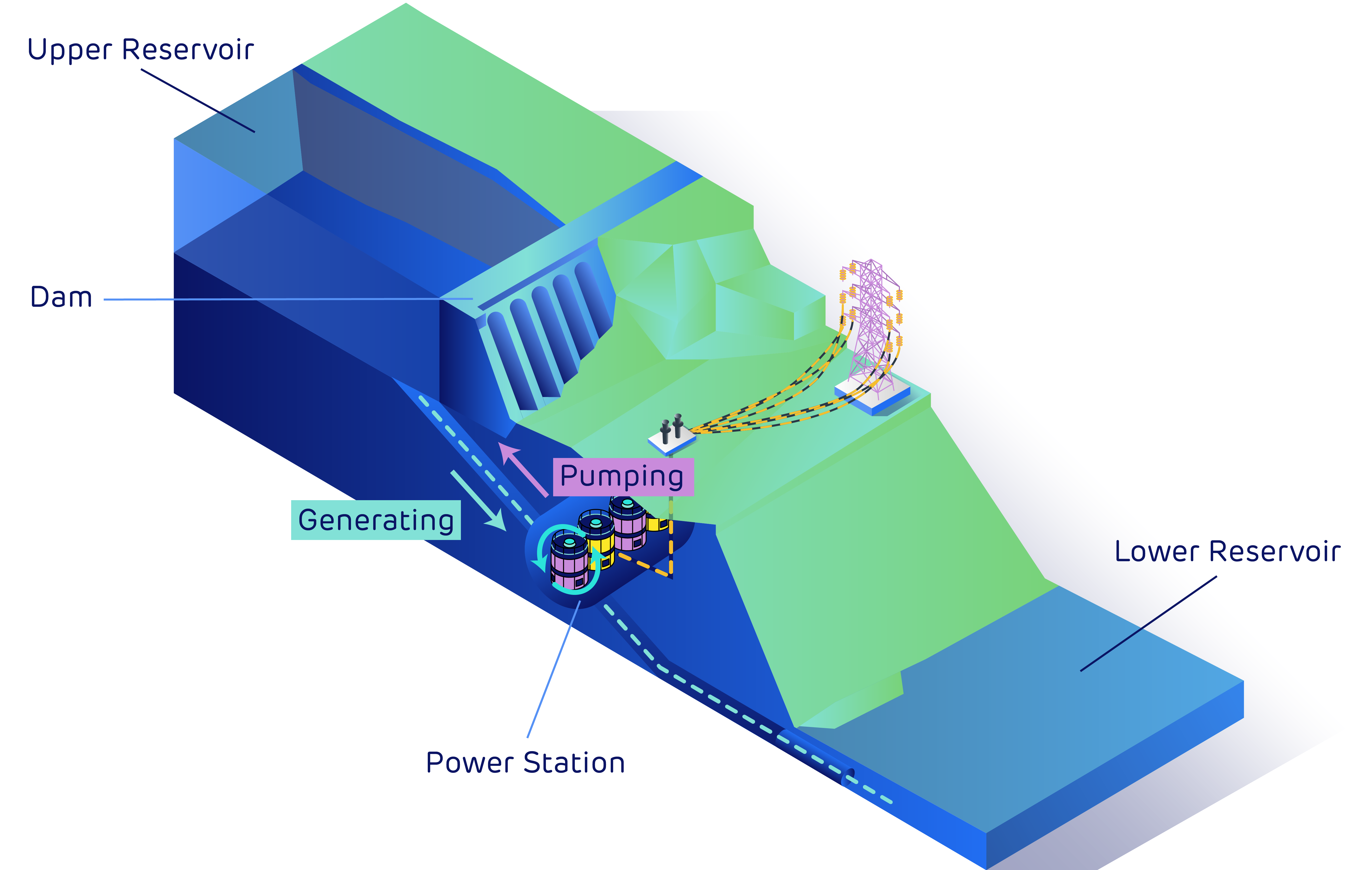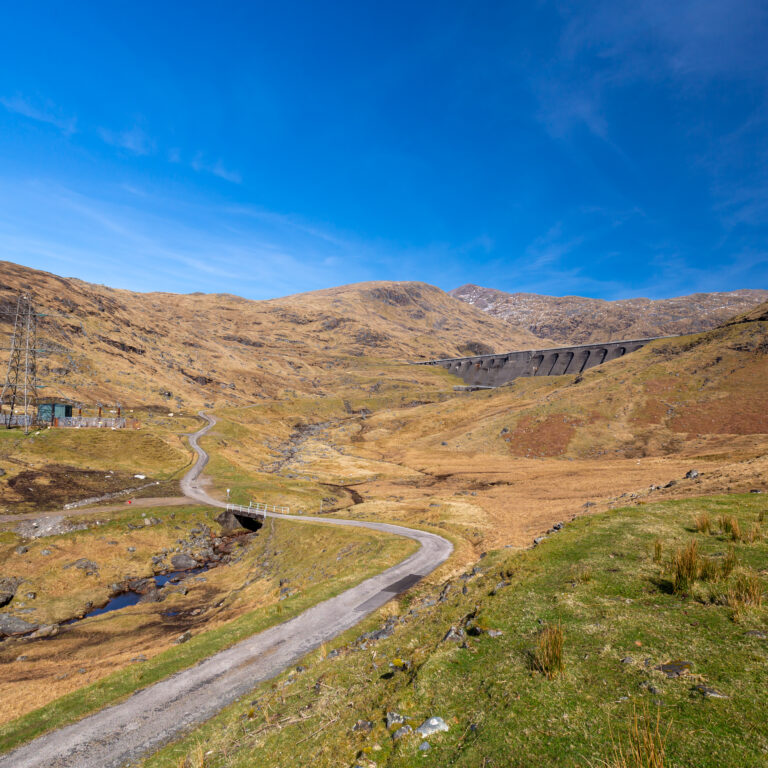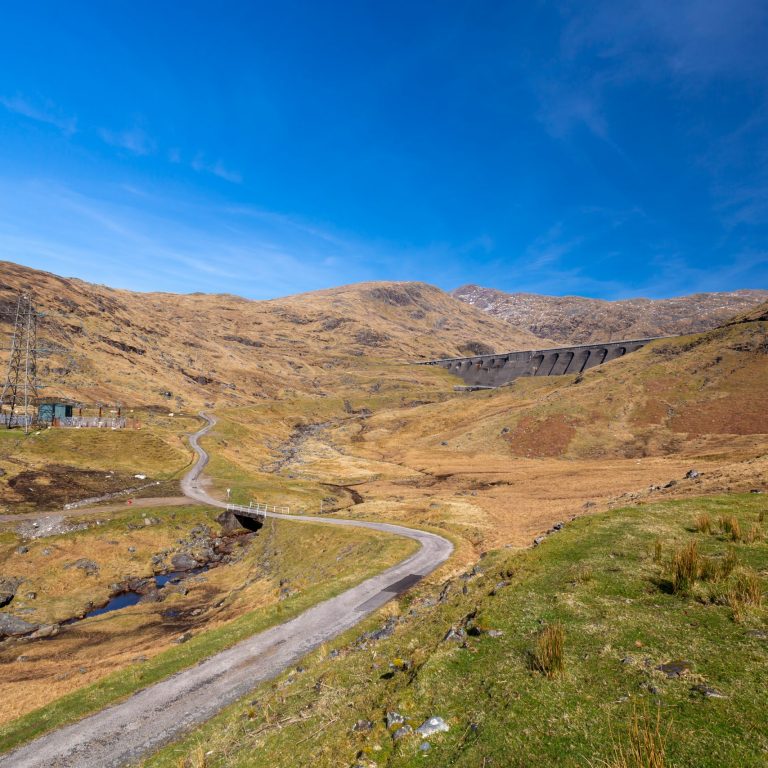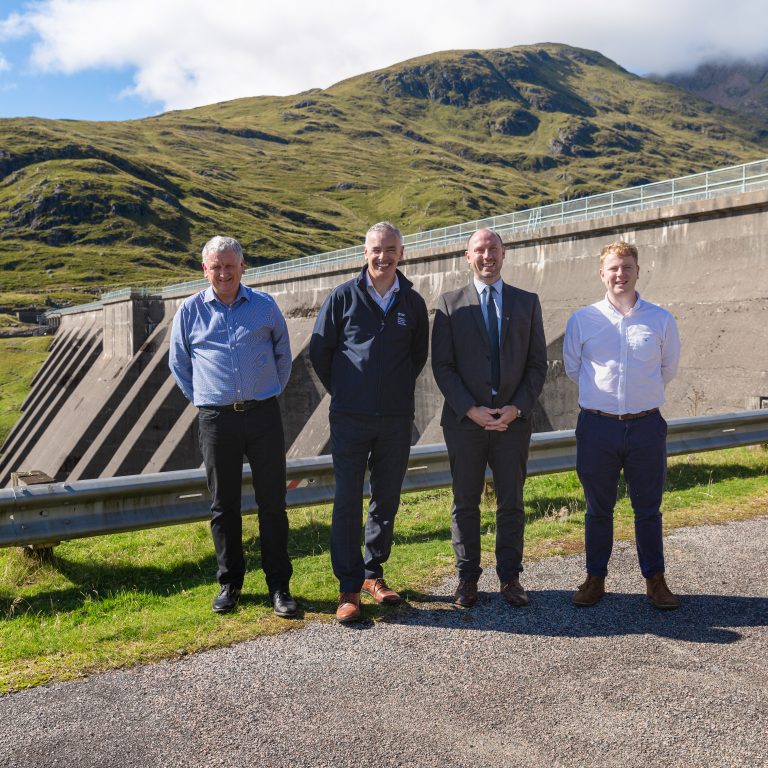At the beginning of March 2021, Britain experienced its longest ‘wind drought’ in a decade. For eleven days, wind output averaged just 11% of the UK electricity mix – less than a quarter of the average output in the month before and the month after. The power system was able to cope as gas power stations made up most of the shortfall.
But keeping the lights on will become increasingly challenging as electricity generation shifts from carbon-intensive coal and gas towards weather-dependent wind and solar technologies, where supply is variable and intermittent. One solution to maintain a stable, resilient power supply as the electricity system decarbonises is increasing the amount of long-duration energy storage that can plug gaps and balance the gird.
Pumped hydro storage – a tried and tested solution
The largest-capacity form of electricity storage by far, pumped storage hydro plays a key role in the energy mix and stabilising the grid. Which is why, following a feasibility study, Drax has kickstarted plans to extend our pumped hydro storage power station at Cruachan in the Scottish Highlands.
By drilling a second cavern inside Ben Cruachan, Cruachan 2, to the east of the original power station, will add up to 600 MW in generating capacity, more than doubling the site’s total capacity to more than 1GW. It’s an epic project and one that could provide power for around a million homes.
The original Cruachan facility has been supplying and absorbing excess power to the grid since 1965. Acting as a ‘green battery’, it stores low-carbon energy when there is over supply and releases it when demand is high.
Designed at a time when the grid was powered by nuclear or coal-fired plants that could only adjust output slowly, Cruachan’s technology is still cutting edge and has proved equally successful at balancing more volatile supply and demand as power generation has shifted towards renewables and low-carbon sources.
“Cruachan plays a critical role in the UK energy system today because it provides a unique range of services for a single asset – it can both generate electricity at 440 MW but it can also pump which means it takes that power off the system so in effect you can deploy greater renewable resources. And if there’s too much wind in the system, rather than curtail wind farms you can pump to take 482 MW off the system,” says Steve Marshall, Development Manager at Cruachan 2.
Enabling more renewables on the system
As Marshall points out, too much wind can be as problematic as too little. With the government’s ambition to quadruple offshore wind capacity by 2030 to 40 gigawatts (GW), the grid will have to manage significantly more wind-generated power, and consequently much greater fluctuations in supply.
Currently, the demand left to be met by renewable generation ranges from 10 GW to 30 GW throughout the year. But modelling by Imperial College London suggests that with 40 GW of offshore wind this range could expand, from 30 GW right down to minus 30 GW, in other words, renewables would produce significantly more than national demand. Without long-term storage capacity, this energy will be wasted, forcing the grid to pay wind farms to stop generating.
“There’s a lot of offshore wind coming online in Scotland that has to be transported through the transmission system to England where the demand is,” says Marshall. “The transmission system in 2030 could become saturated more than 20-30% of the time because there’s too much renewable power. You have a choice: either build more transmission lines or more energy storage that can take that power off the system.”
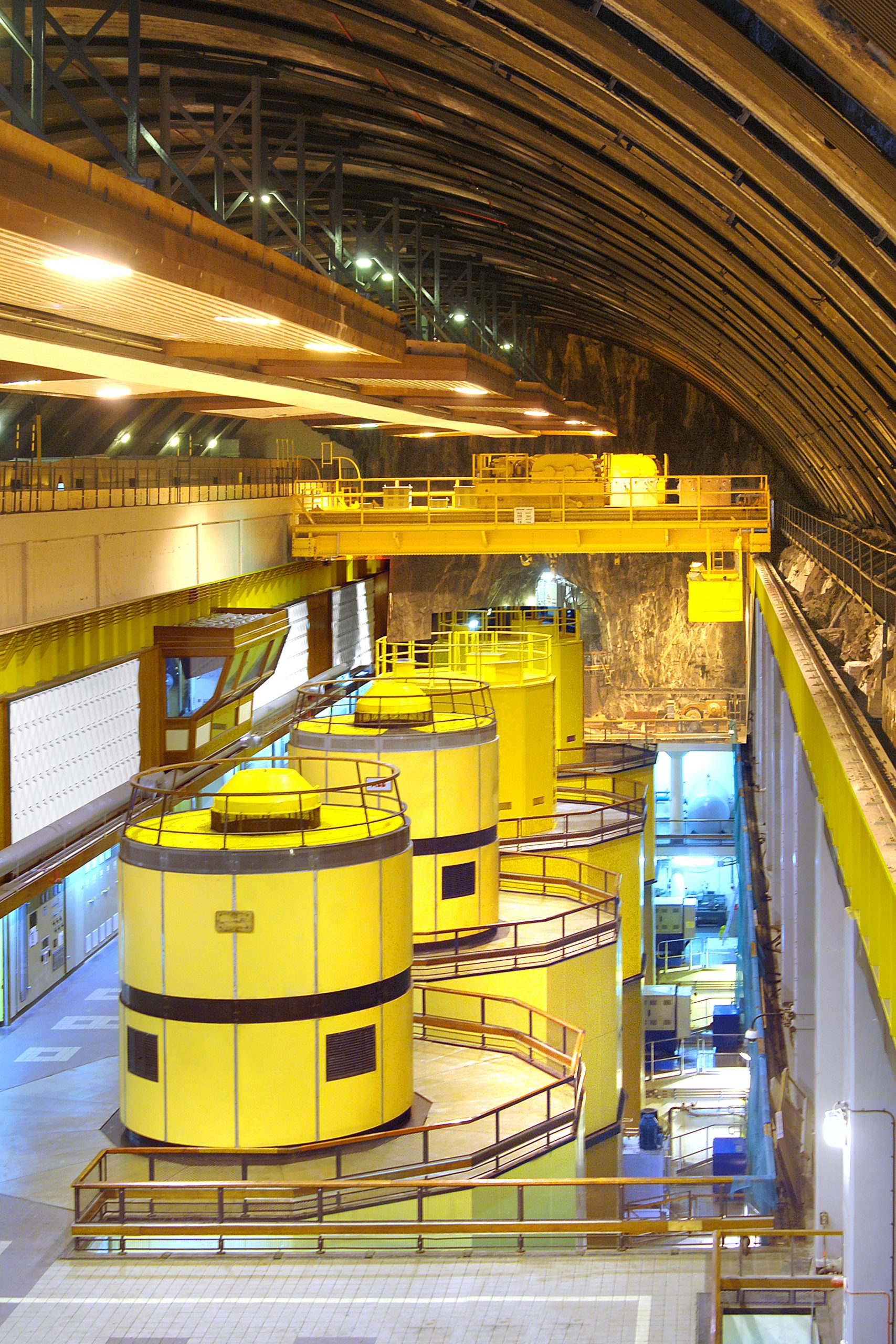
Turbine Hall at Cruachan Power Station
Plugging the inertia gap
As well integrating more renewables into the electricity mix, the Cruachan expansion may also help meet the inertia shortfall. Inertia – stored kinetic energy – acts as a ‘shock absorber’ in the system, smoothing out sudden changes in power supply and demand and ensuring that frequency remains stable at 50 Hz. This is a critical, as just 1% variation above or below this standard can damage equipment and infrastructure.
Many renewable technologies, such as wind turbines and solar PV panels, aren’t built around spinning turbines that synchronise with the grid and so lack inherent inertia. Cruachan’s turbines, on the other hand, spin at 500/600rpm and produce electricity at the grid frequency of 50 Hz providing inertia that helps the grid remain stable. Indeed in 2020, National Grid ESO contracted a unit at Cruachan to provide inertia 24/7 as part of a 6 year contract
“The grid calls on Cruachan three to four hundred times a month, with generation mode changes ranging from hours to very short bursts,” explains Marshall. Increasing the number of turbines would allow Cruachan to respond to a greater range of the grid’s needs.
“With more units you have more flexibility,” says Marshall. “If you start to change the generating unit sizes to 150 MW or 200MW machines you get different levels of inertia that offers more options to the grid.”
Building on Cruachan’s legacy
While automated drilling processes mean that the rock will no longer need to be excavated by ‘Tunnel Tigers’, the crews that hand-drilled, blasted, and excavated granite from the mountainside, Cruachan 2 will still create an estimated 300 jobs during peak construction and support around 900 jobs across the country. And by bringing around 300 GW a year of renewable energy to the grid, and reducing requirement for further transmission lines the expansion has the potential to save consumers more than £350 million in energy costs by 2050.
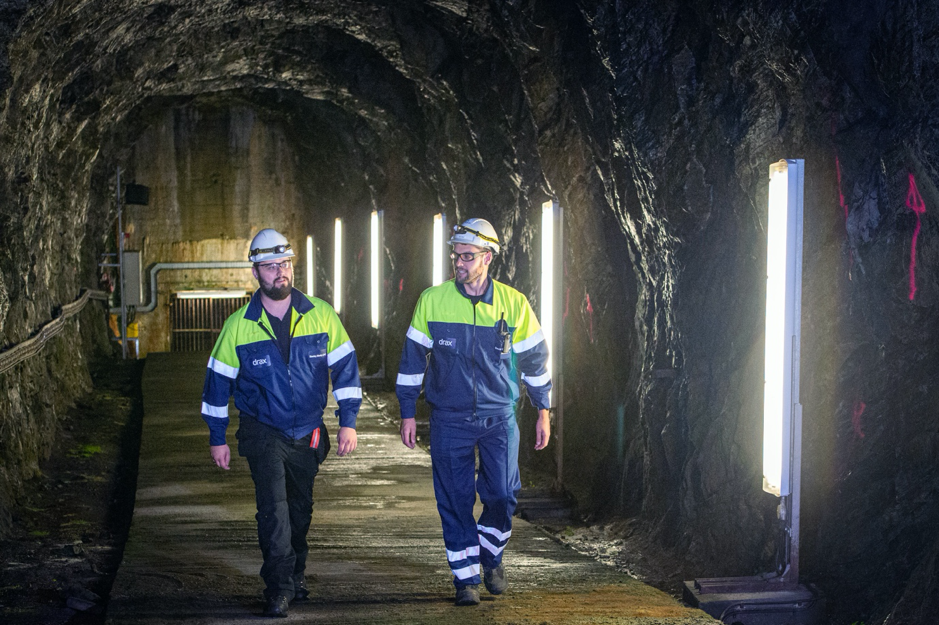
“With the increased deployment of renewables there is a need for more assets like Cruachan,” says Marshall. The ambition is to have Cruachan 2 operational by 2030 and work could start as early as 2024.
But progress is dependent on the government providing support through a revenue stabilisation mechanism for such a long-term, large-scale energy storage project. A study by KPMG found that a Cap and Floor regime, similar to what has unlocked a wave of investment in cross-border inter-connectors, could be the best mechanism for long-duration storage. If this is forthcoming, the expansion could play a vital role in stabilising the grid and smoothing the UK’s transition to a net zero power system.







